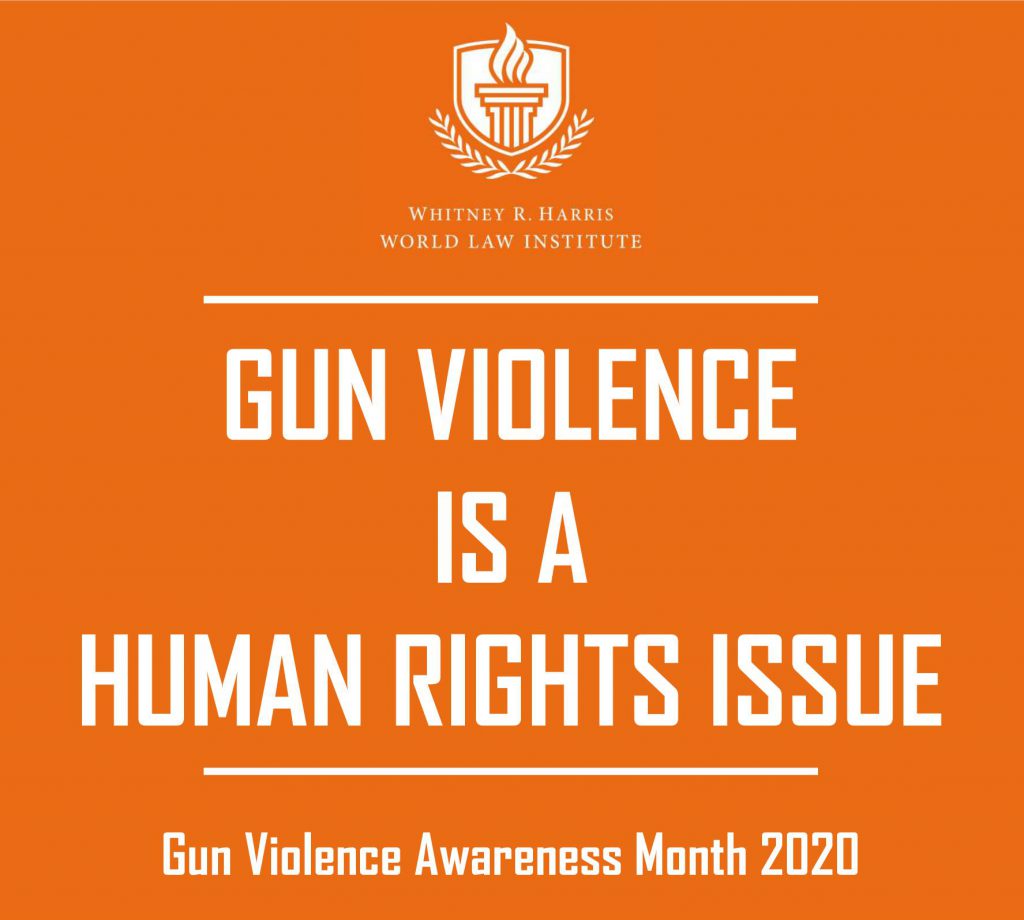By: Stephanie Harris, MA, MSW, LMSW, Life Outside of Violence (LOV) Clinical Case Manager, Institute for Public Health at Washington University in St. Louis
This blog is part of a special series by the Harris Institute’s Gun Violence and Human Rights Initiative and the Institute for Public Health’s Gun Violence Initiative in recognition of National Gun Violence Awareness Month, launched on June 5th for Gun Violence Awareness Day. Throughout this series we will highlight the work being done on this critical issue across campus, the St. Louis region, and the country.
Human rights refer to a set of inviolate principles endowed to everyone simply because we are human. Accordingly and without distinction, these rights cannot be transferred or surrendered; we are all “born free and equal in dignity and rights.”[1] Gun violence is an insidious adversary, trampling on human rights of Black people, where the weight of unnamed bullets trap them in their homes, pave pathways to prisons, and ultimately destroy their communities, leaving many hopeless or dead. Recent studies show that gun-related murders accounted for 14,542 (37%) gun deaths in America in 2017, of which Black Americans were killed at a rate of 10 times higher than their white counterparts.[2]
In St. Louis, MO, a city rated highest for the number of gun-related injuries (18.6 per 10,000 people) as well as gun-related deaths (9.1 per 10,000 people),[3] Life Outside of Violence (LOV), a Hospital-based Violence Intervention Program (HVIP), purposes to restore hope in its communities and interrupt the cycle of violence; reduce recidivism and risk factors for violence, while increasing protective factors and empower individuals to take back their lives and communities from this adversary.

LOV aims to restore hope in communities in the Greater St. Louis area by providing support to victims (aged 8 to 24 years) directly impacted by gun violence (and/or stabbing, blunt trauma). Victims of violence seen at one of the four St. Louis area Trauma-1 Centers (i.e. Barnes-Jewish Hospital, Children’s Hospital, Saint Louis University Hospital, Cardinal Glennon Children’s Hospital), upon enrollment, are matched with LOV clinicians, who employ evidence-based interventions to assess for and reduce triggers (e.g. unemployment, food insecurity, housing instability, lack of access to affordable medical and mental healthcare, transportation) that rouse negative emotions that could lead to violence. They make referrals, interface, and collaborate with agencies and community partners, who provide many of these essential resources and services, which act as protective factors against this community adversary. They address the complexities of trauma on the mind and body, which can threaten participants’ sense of safety and wellness, with modalities such as trauma-informed counseling; cognitive behavioral therapy (CBT) helps participants learn how to cope with painful thoughts or feelings, while dialectical behavior therapy (DBT) aids to address their struggles with emotional responses, and resilience, using the Strengths-based approach.
Employing these modalities, and other therapies, LOV nurtures a positive self-concept in participants that is transformative. Through the power of their lived experiences and voices, LOV participants are afforded opportunities to tell their stories; inspire changes in their family systems and neighborhoods, as well as inform discussions in LOV and policies on gun violence, in their local government. They have the power to defeat this enemy and take back their lives and communities.
In the face of human rights, gun violence threatens the
lives of the most vulnerable people in our communities; and so, it is a threat
to us all. As gun violence begets gun
violence and there are many triggers to its cause, LOV arms its participants-to
live lives outside of violence-and end its cycle.

[1] United Nations, “Universal Declaration of Human Rights.” United Nations, Documents, https://www.un.org/en/universal-declaration-human-rights/. Accessed Jun. 8, 2020.
[2] Centers for Disease Control and Prevention, Web-based Injury Statistics Query and Reporting System (WISQARS), “Fatal and NonFatal Injury Data,” https://www.cdc.gov/injury/wisqars. Accessed Jun. 9, 2020
[3] “City Crimes Involving Guns, Analyzing Gun Incidents in Major U.S. Cites,” Security.org, https://www.security.org/resources/city-crimes-involving-guns/. Accessed Jun. 8, 2020
